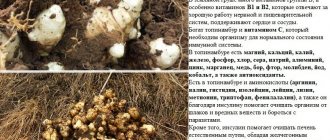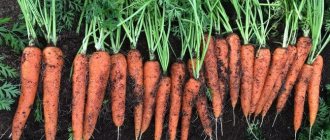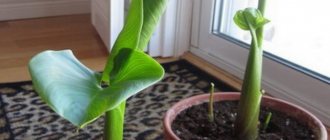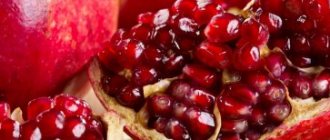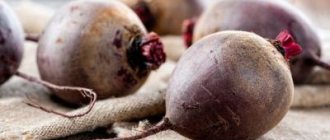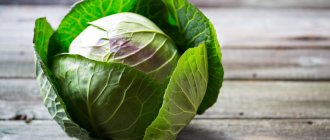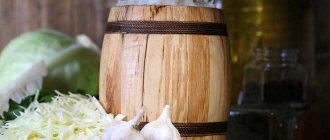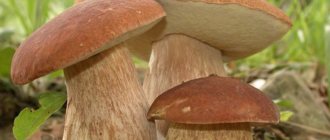The harvested carrots and beets can be preserved not only until the winter cold, but also until next autumn. A cellar is ideal for overwintering vegetables.
There are several ways to store root vegetables. Subject to certain rules, agricultural products can be stored both together and separately.
Let's take a closer look at how to properly store carrots and beets for the winter in a cellar, underground or basement.
Suitable varieties
Late-ripening varieties of root crops should be selected for storage . The following varieties and hybrids of carrots are best stored:
Gribovchanin F1.- Nantes 4.
- Incomparable.
- Nevis F1.
- Samson.
- Chance.
- Moscow winter.
- Incomparable.
Beet varieties suitable for long-term storage:
- Bravo.
- Incomparable.
- Bordeaux 237.
- Red ball.
- Podzimnyaya.
- Mulatto.
- Detroit.
- Nosovskaya flat.
There are no definite recommendations on how best to store it at home and where, in the basement or underground (underground), everyone decides for themselves experimentally. The determining factors for further preservation are:
- choice of root crop variety;
- preparation technology;
- room temperature;
- humidity mode;
- lack of excess oxygen supply;
- pest protection.
Among the storage methods, every gardener will find his own, the most convenient and profitable. First, you need to decide when and how to remove root crops for storage .
You can read more about suitable varieties of carrots and shelf life here, and here we talked about which varieties are suitable for long-term storage.
Preparing the premises?
In order not to lose the precious beet harvest and provide yourself with useful vitamins throughout the winter, you should take into account a lot of nuances and recommendations for proper storage of beets in the cellar.
Make sure that the cellar has a sufficiently high degree of ventilation , and cool air moves freely around the entire perimeter. Install bins for root crops 10-15 cm above floor level for better airing.
The floor, walls and other surfaces must be cleaned and dried from excess debris. To be on the safe side, bleach is sometimes used and whitewashed for sterilization .
When is the best time to dig up vegetables?
Harvesting vegetables too early reduces the consumer quality of the root vegetable, preventing it from accumulating a sufficient amount of sugars. Staying in the garden for too long makes it possible to accumulate sugar in large quantities, which makes the vegetable very attractive to rodents.
Typically, harvesting times depend on the ripening period and weather. The ripening period of root crops is usually written on the seed packaging . It is better to dig up vegetables for storage when it is favorable according to the Lunar calendar. The days of the waning moon are considered the most favorable, but this factor can be neglected for the sake of suitable weather conditions.
Harvesting should begin at the time when the lower 2-3 shoots of the tops have turned yellow. Such root vegetables already have good consumer properties. We harvest beets before the first frost (having frozen, they will not be suitable for storage), and carrots can be safely left in the garden until the first snow (chilled root vegetables are better stored). In a rainy autumn, it is better to harvest the crops early, since the roots, saturated with moisture, will not be preserved well until spring and will be more susceptible to rotting.
IMPORTANT : Carrots can be dug up after the first frost, but beets must be removed before them! Frozen beets will begin to rot almost immediately.
You can learn about when to remove carrots from the garden for storage here.
Watch a video about the timing of harvesting carrots and beets:
What is the best way to store carrots in the cellar?
It is very important to properly prepare the room; this has a significant impact on the final result. What you have to do:
- Ventilate the room. It must be fresh there.
- Disinfect the premises. A month before moving vegetables into the cellar, treat the walls with lime.
- Whitewash the basement. This will protect the walls from damage by fungus and bacteria.
In the beds
Get yourself thick plastic film, sand, shavings, fallen leaves and fertilizer. The vegetable will be aged under conditions as close as possible to natural ones, like in soil. You need to lay a layer of film on the shelf. A mixture of sand, shavings, and fallen leaves is poured on top. The layer should be thick. Dried carrots are placed vertically in an improvised bed. The top is covered with another layer of film and the edges are pinched. This way the harvest will remain on the shelves until spring.
In enamel pans
To preserve early ripening carrots of the right varieties in winter using this method, they are thoroughly washed and the tops are cut off. All root vegetables are thoroughly dried in the sun. They are placed tightly vertically in an enamel pan. Place a paper towel on top. The container is tightly closed. The pot with the plants is placed in a cool cellar with a high level of humidity. It will not deteriorate until the next harvest.
In plastic boxes
To store vegetables using this method, you should prepare some kind of filler: clay, sawdust, sand. Plastic boxes are well suited for carrots because they are less likely to rot than wooden ones, are susceptible to mold, and the spread of fungal diseases. These properties contribute to long-term winter storage. Carrots are laid in layers with any of the selected fillers.
In wooden boxes
There are two ways to store vegetables in this container - with or without filler. Brief description of each:
- No filler. Place the carrots in layers in the boxes and cover tightly. Place on high shelves approximately 15 cm from the wall. Place no more than 20 kg of root vegetables per box.
- With filler. This differs from the previous storage method in that the vegetables are laid in layers, each of which is sprinkled with sand.
Harvesting methods
Someone pulls root crops out of the ground, someone digs with a pitchfork, someone takes up a shovel. How to do it right? Do not water the vegetable bed before harvesting .
It is best to dig with a blunt pitchfork, supporting the root crop by the tail. The forks must be placed strictly vertically no closer than 5 cm from the row. This will help avoid microtraumas, because the key to good storage is intact skin. Therefore, hitting root vegetables against each other to shake off the soil is also not recommended.
It is better to remove excess soil from root crops with gloved hands . Then you need to trim the tops, cut them, not break them off, leave a tail of 1-1.5 cm, and leave to dry for several hours. Tops should be trimmed immediately as this will preserve nutrients. Then sort the fruits, remove damaged and spoiled roots to avoid rot.
Some vegetable growers recommend this method of cutting carrot tops - cutting off 0.5–1 cm of the top of the root crop itself. If you use this method, you should keep the vegetables for some time before storing them in the storage place - until the top cut is covered with a crust, otherwise the fruits will begin to rot soon. In rainy weather, drying in the shed may take several days, even a week.
Root crops must not be washed before storing ! Washed beets and carrots can be stored in the vegetable compartment of the refrigerator in a plastic bag for one month.
Possible problems
- The appearance of rot from excess moisture. This can be prevented if, when laying carrots, dip both ends in ash. Also, next to an open bag filled with carrots, you can put something that absorbs moisture - lime, newspapers, moss.
- You won't be able to sort through the contents of a large bag to find spoiled carrots. To solve this problem, do not initially put root vegetables in overly large bags. It would be better if they were transparent.
We have given you simple instructions to try out such a new and modern storage method as storing in plastic bags, including vacuum bags. In order to enjoy your own grown, harvested and stored carrots in winter, you must follow these rules. After all, your own carrots cannot be compared with store-bought ones. Keep this healthy and tasty vegetable healthy.
Where and how can you keep them fresh at home?
You can store it at home (in an apartment), either on a glazed balcony, cellar (basement), or in a garden bed. But the best place to store vegetables is undoubtedly the cellar . It is always dark there, constant temperature and humidity are maintained.
You need to prepare the cellar in advance. Ventilate, if necessary, dry, treat against fungus, check for holes from rodents. To reduce humidity, you can place boxes of salt or charcoal in the corners of the cellar. If you whitewash the basement walls with quicklime, you can kill two birds with one stone: the lime will both disinfect and make the air drier.
TIP : To prevent rodents from eating, you can use baited traps, repellers, or treat the room with special products.
General rules for storing root vegetables
Conditions optimal for long-term storage of root vegetables vary depending on their type. However, there are general rules:
| Purity | Before storing vegetables, you need to disinfect the room and containers in which root vegetables will be stored. The walls of the vegetable storehouse should be whitewashed, covered with lime or treated with a sulfur bomb. |
| Constant temperature | In the vegetable storehouse, eliminate the possibility of temperature changes using additional thermal insulation. Optimal – 0–+2°С. Deviation to one side or the other will result in spoilage of vegetables. |
| Preparing root vegetables | Before storing, all vegetables need to be prepared: sorted, cut off the tops, and dried. |
| Regular control | It is necessary to monitor the condition of vegetables throughout the entire storage period. Root crops that show signs of spoilage are subject to confiscation. Rotting from one will spread to all nearby ones. |
What temperature and humidity should it be?
At temperatures close to zero, metabolism rapidly slows down, which contributes to greater preservation of root crops. They have no rest period. The storage temperature of carrots and beets should not be more than 10 degrees , because already at +5 degrees, buds that could not be completely removed can begin to grow.
If the humidity is low, it threatens withering of the root crops; if it is high, it is fraught with rotting. Therefore, humidity should be maintained around 85 – 90%.
You can read more about the required storage temperature in this article.
Options
Beetroot is the most shelf-stable root vegetable. Therefore, the following storage rules should be observed:
- Place them in bins or boxes; at a temperature of about 3 degrees, they will last well in the basement all winter.
- It is well stored on piles of potatoes, which share excess moisture with it.
- In a box without holes, sprinkled with wet sand in the basement.
- In plastic bags of 15-20 kg.
- In the garden in small piles. To do this, dig a hole 40 cm deep, place root crops there in the shape of a prism (prism height 1-1.3 m), cover with a thick layer of straw so that the height of the pile is 2 m, cover with earth, and in winter additionally cover with snow. Before laying, it is advisable to treat with chalk powder (200 g of chalk per 10 kg of beets).
Carrots are difficult to keep in perfect condition because they have a thin skin that does not retain moisture well; the roots quickly dehydrate and dry out. Plastic bags with a capacity of 20-30 kg will help preserve the necessary moisture. Root vegetables are filled in 2/3 of them, sawdust is sprinkled on top, there is no need to tie the bags so that condensation does not form.
The “clay shirt” also preserves carrots well - make a clay mash (clay is diluted in half with water), dip the carrots into this mash and dry it. In such a shirt, carrots retain their juiciness well and do not spoil.
ATTENTION : If during harvesting you come across a lot of spoiled or injured root crops, you can process them and store them in processed form.
How to properly store for the winter?
Carrots can be stored in several ways:
drying carrots at home;- freezing;
- drying;
- canning.
These are labor-intensive methods, but they are used more often because they better preserve all the nutritional properties of vegetables in the winter. Freezing carrots is also used, when small root vegetables are grated and placed in the freezer. You can show your imagination and make curly cuts. A cheerful mix of vegetables (carrots, sweet peppers, green peas) will also please you in the cold winter.
Avoid storing root vegetables and apples in the same room, this will help preserve the root vegetables longer.
Harvesting beets and carrots is a troublesome task, and it should be approached responsibly . If you do everything on time and follow these simple storage rules, then your vegetables from the garden will be fresh until spring, and maybe until the next harvest year.
Useful tips
- It is useful to store beets with potatoes, they will give them excess moisture.
- When planting root crops, you can layer them with layers of fern leaves. They secrete phytoncides, helping vegetables fight fungi and rot.
- It is better to store small and large root vegetables separately. Use the former first, as the latter fit better.
- For storage in the garage or on the balcony, you can make a vegetable storage box from a box, insulating its walls and lid with polystyrene foam.
- If root vegetables are sprinkled with sand, it should first be disinfected at high temperature in the oven or in the sun.

